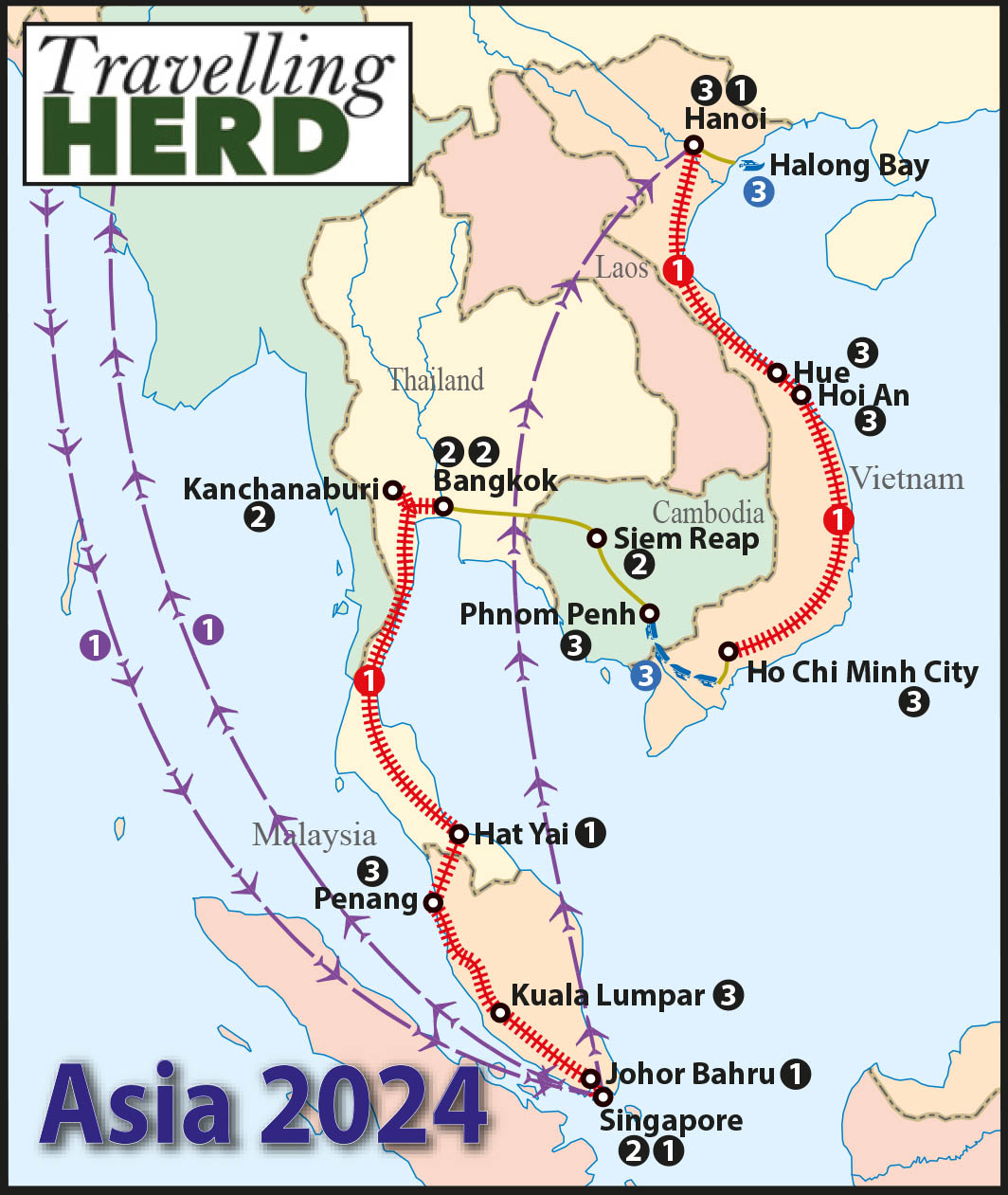Read this blog: The one where Robert is not allowed in a train carriage
Saturday 13th and Sunday 14th April 2024
The MRT [Mass Rapid Transit] network in Kuala Lumpur has introduced a trial of women only coaches to provide them with a safer and more comfortable way to travel. We did not have to use the MRT during rush hour so there was generally plenty of space in both the mixed carriages and the women only ones.
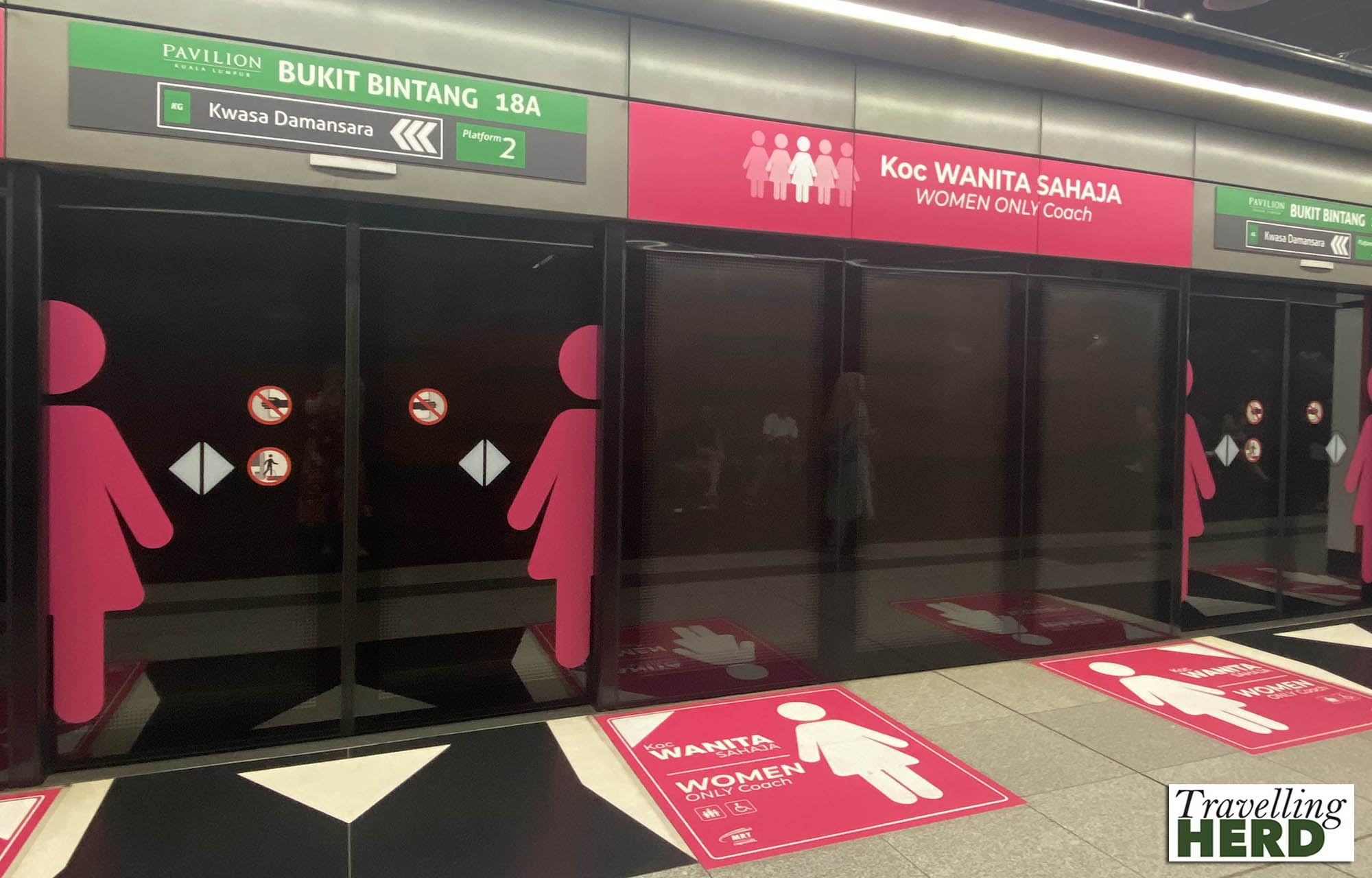
On some occasions, to ensure we were compliant, Robert stood behind the pink line while Matilda was able to take a seat on the other side.

As we would not be leaving from the old Kuala Lumpur Railway Station we decided we should go and view the exterior, which is said to be very striking.
Opposite the old station stands the Railway Administration Building, dating from 1917. It still houses the national railway administration for Peninsula Malaysia, which is now known as KTM [Keretapi Tanah Melayu]. The building was designed by the architect, A.B Hubback who was Assistant to the Director of Public Works for the state of Selangor. During the 20 years he held this post he also designed the Kuala Lumpur Railway Station and the Jamek Mosque, which we had already seen, nestling at the confluence of the Klang and Gombak Rivers, dwarfed by its surroundings [see previous blog post].
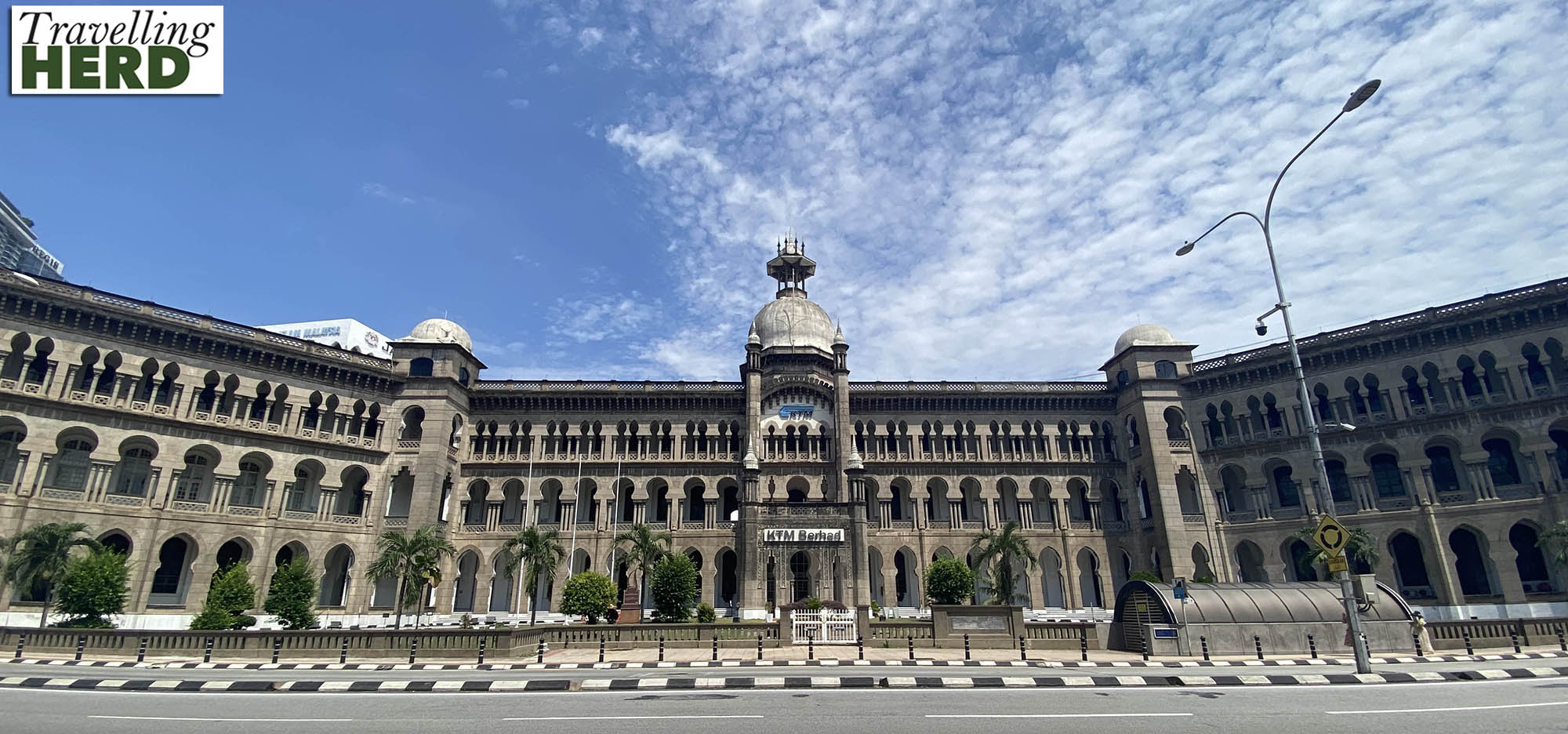
The Anglo-Asian style Kuala Lumpur Railway Station originally opened in 1910 but various changes have been made since, including significant renovations carried out in 1986 when some of the old damaged domes had to be replaced.

Our train had passed through this station on our way into Kuala Lumpur but the platforms give no indication of the architectural splendour of the exterior. It was superseded by Kuala Lumpur Sentral in 2001.
From here we walked through the Petaling Street Market. This is a covered market in Chinatown where everything must be bargained for and the prices quoted at first will be vastly inflated, especially for tourists. We strolled through for the experience but refrained from haggling.

We walked on past the Merdeka 118 which loomed high above us. The name derives from the number of storeys and Merdeka means ‘independence’ in Malay. The spire was completed in December 2022 making it the second tallest building in the world. It rises 2,227 ft [678.9 m] above ground and 2,300 ft [700.9 m] above sea level.

Taking a comfort break, Matilda was overwhelmed by the options available to her on the Washlet electronic bidet/toilet and felt it would be unwise to remain seated for too long in case it spontaneously sprang into action and surprised her.
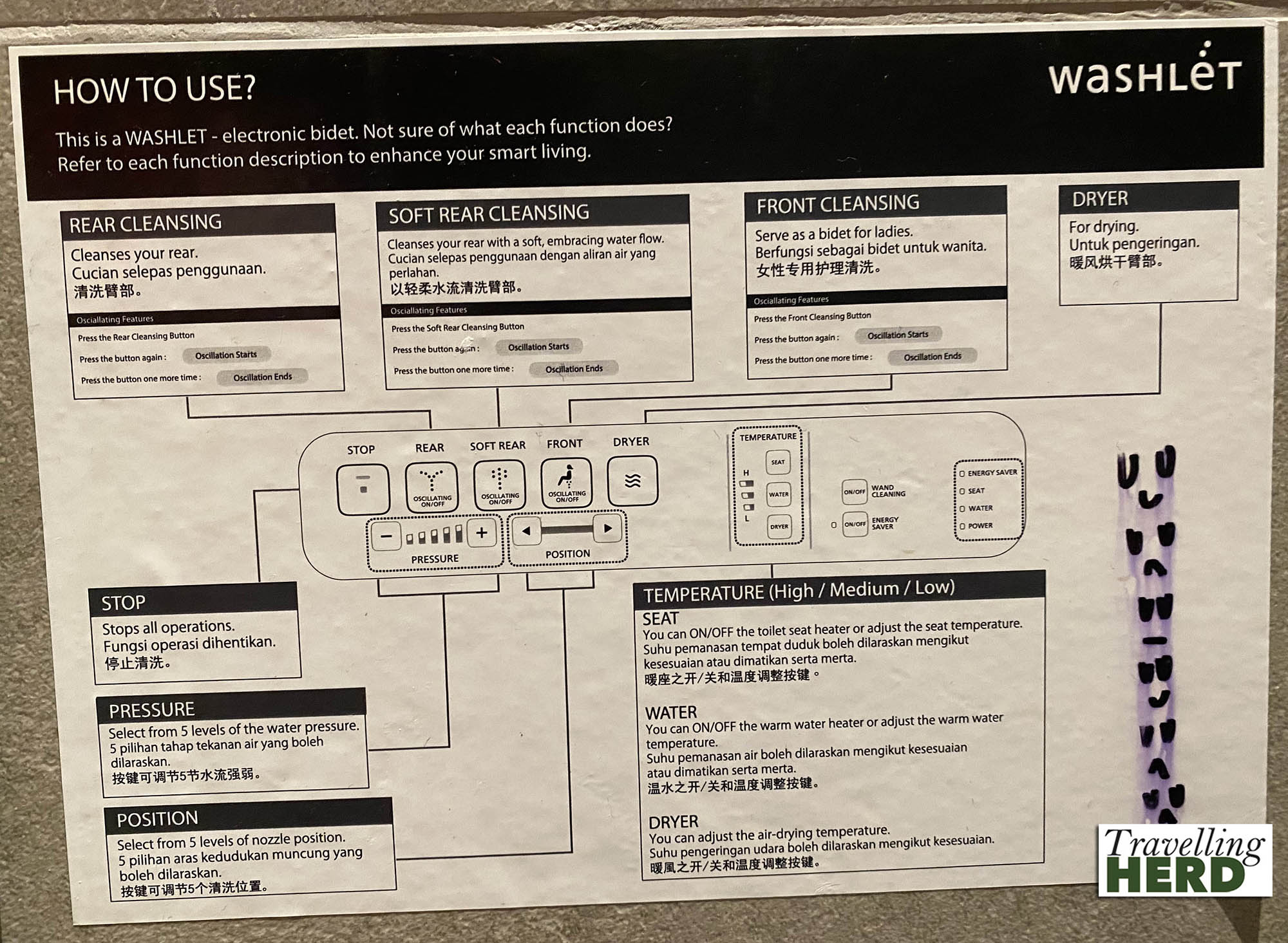
The KL Monorail line in Kuala Lumpur was opened in 2003 and is marked as Line 8 in green on the maps. Originally two lines were planned but only one was built due to the financial crisis in 1997. Running above the streets on two parallel elevated tracks it reminded Robert of something out of the original ‘Bladerunner’.
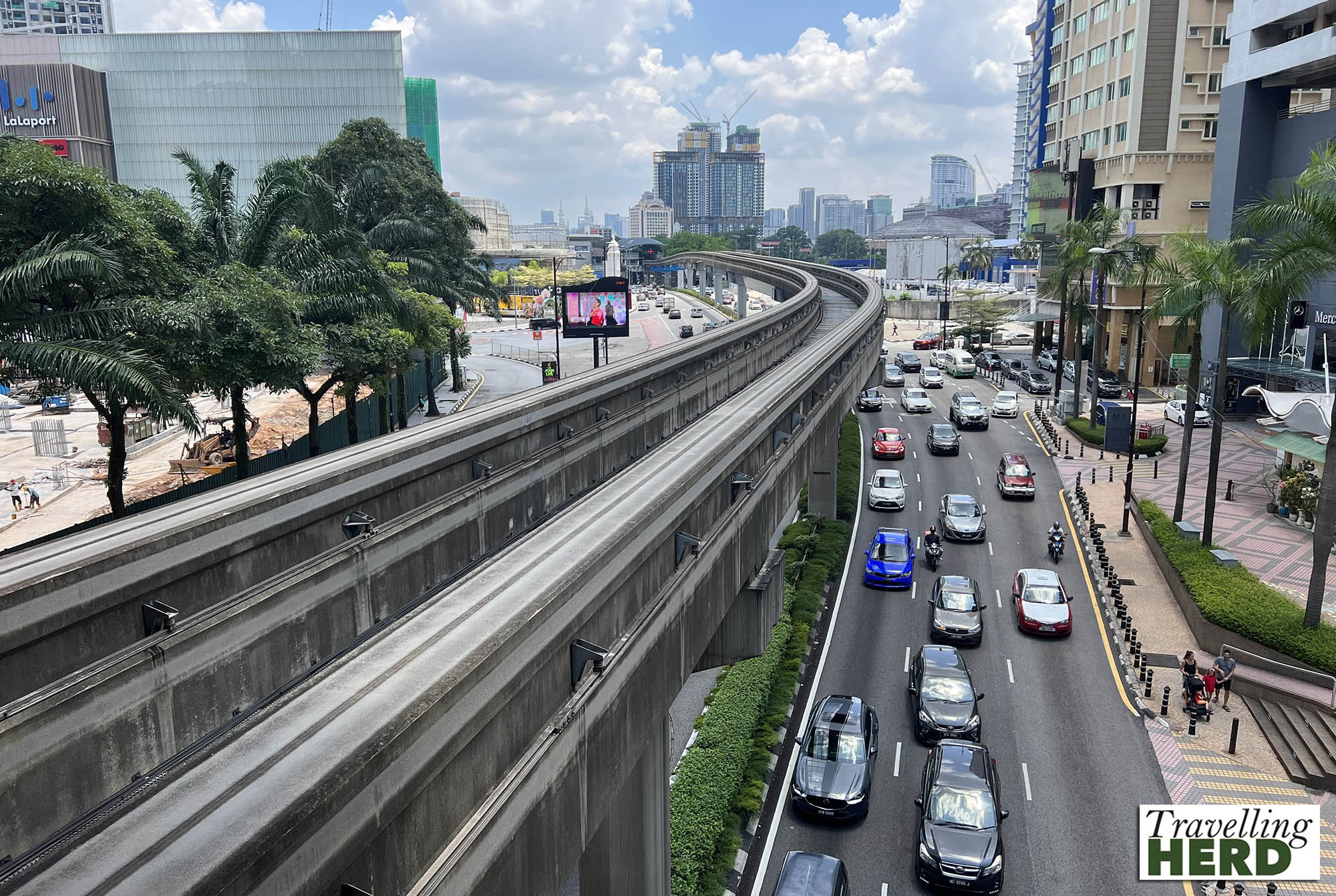
On our ascent of the KL Tower, Robert had spotted a flat roofed building with a bar on top which he obviously wanted to visit. This turned out to be the Helipad Lounge, with panoramic views of the city [see Video of the day].

We looked back towards the KL Tower and the setting sun.
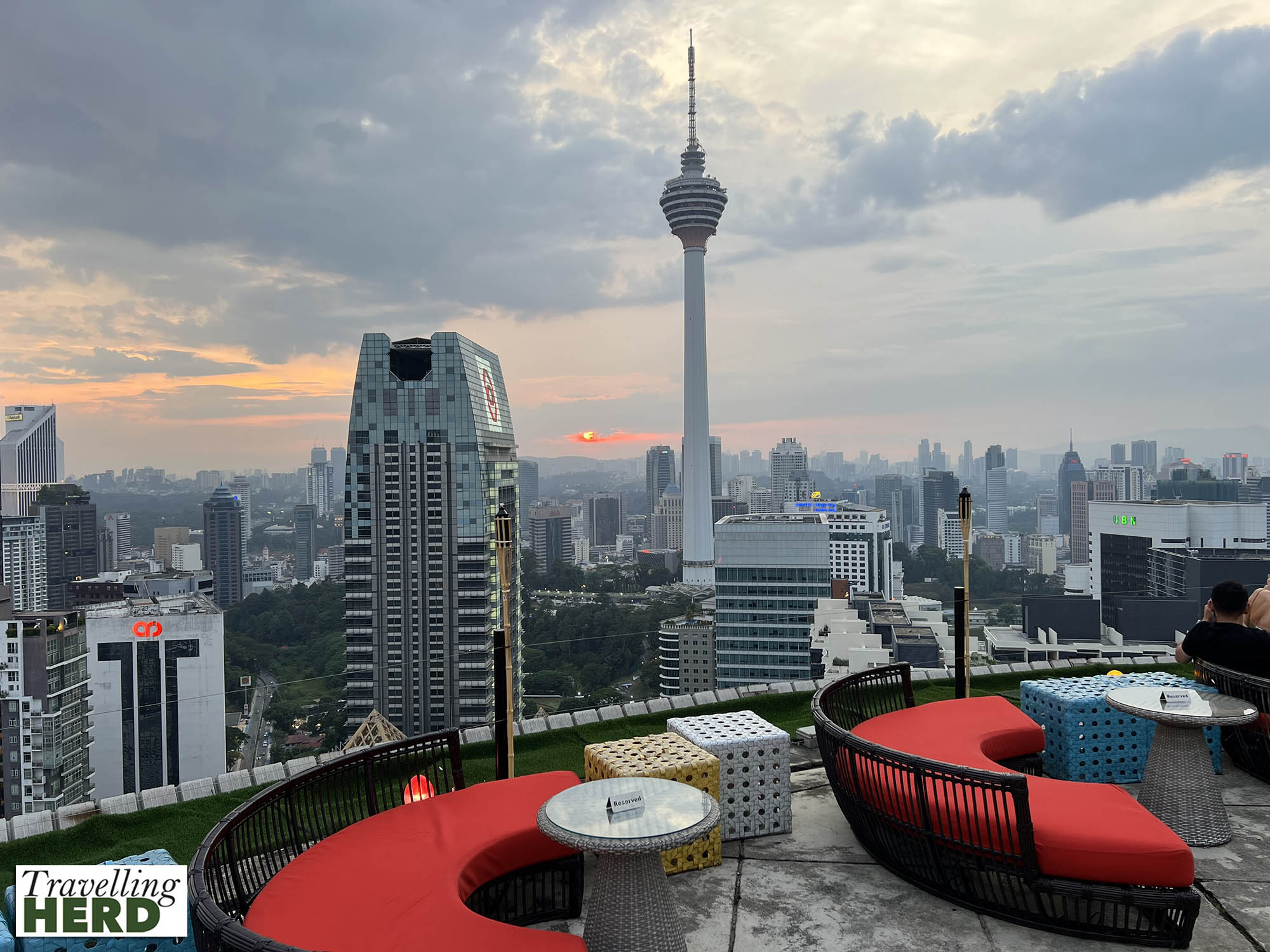
To enhance the impression of a working helipad, some of the waiters were smartly dressed in pilot uniforms.
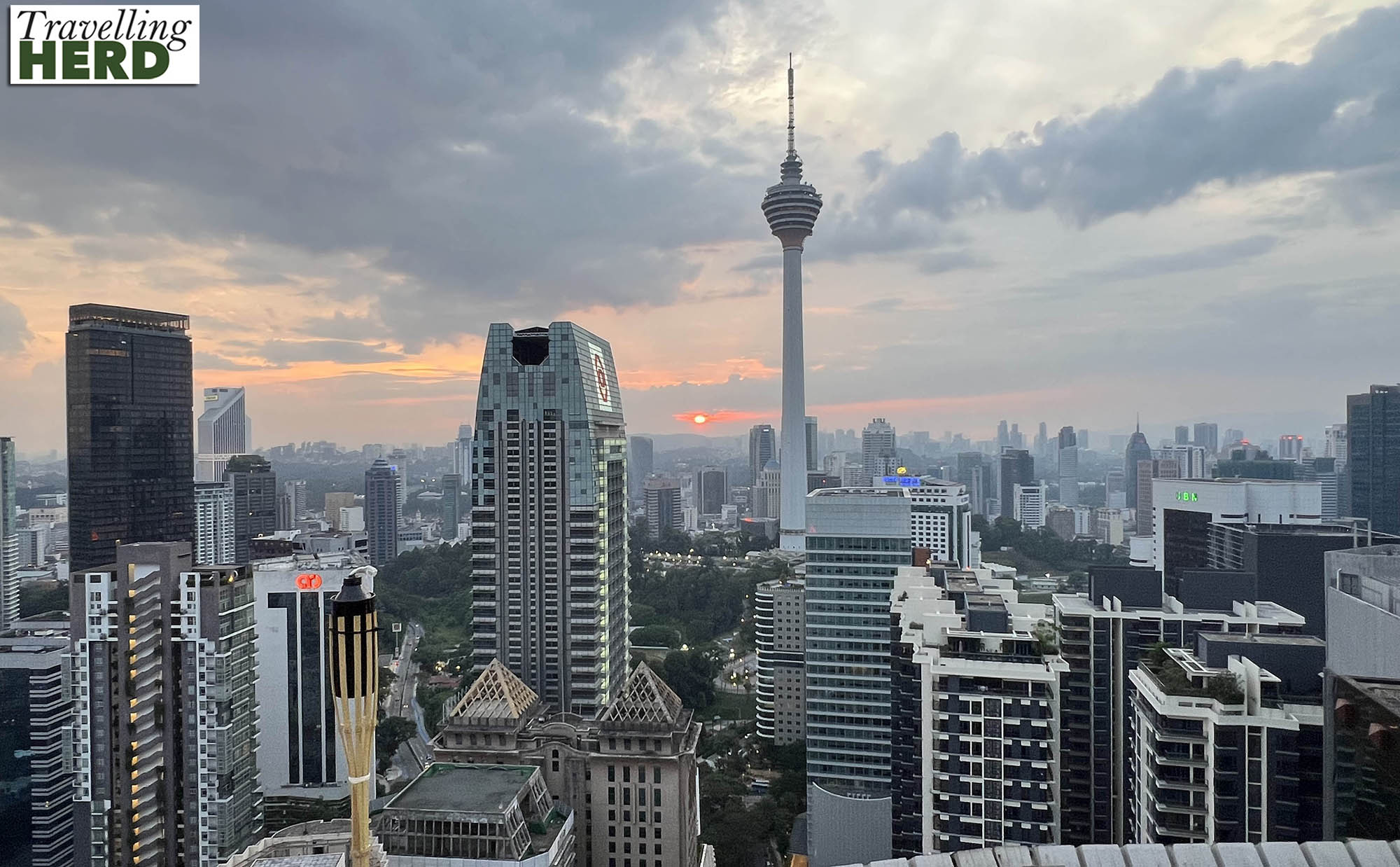
The bar was shaped like the fuselage of a helicopter.

Unfortunately, planning permission had been granted for a building which obscured the full splendour of the Petronas Towers [see also the feature photo].
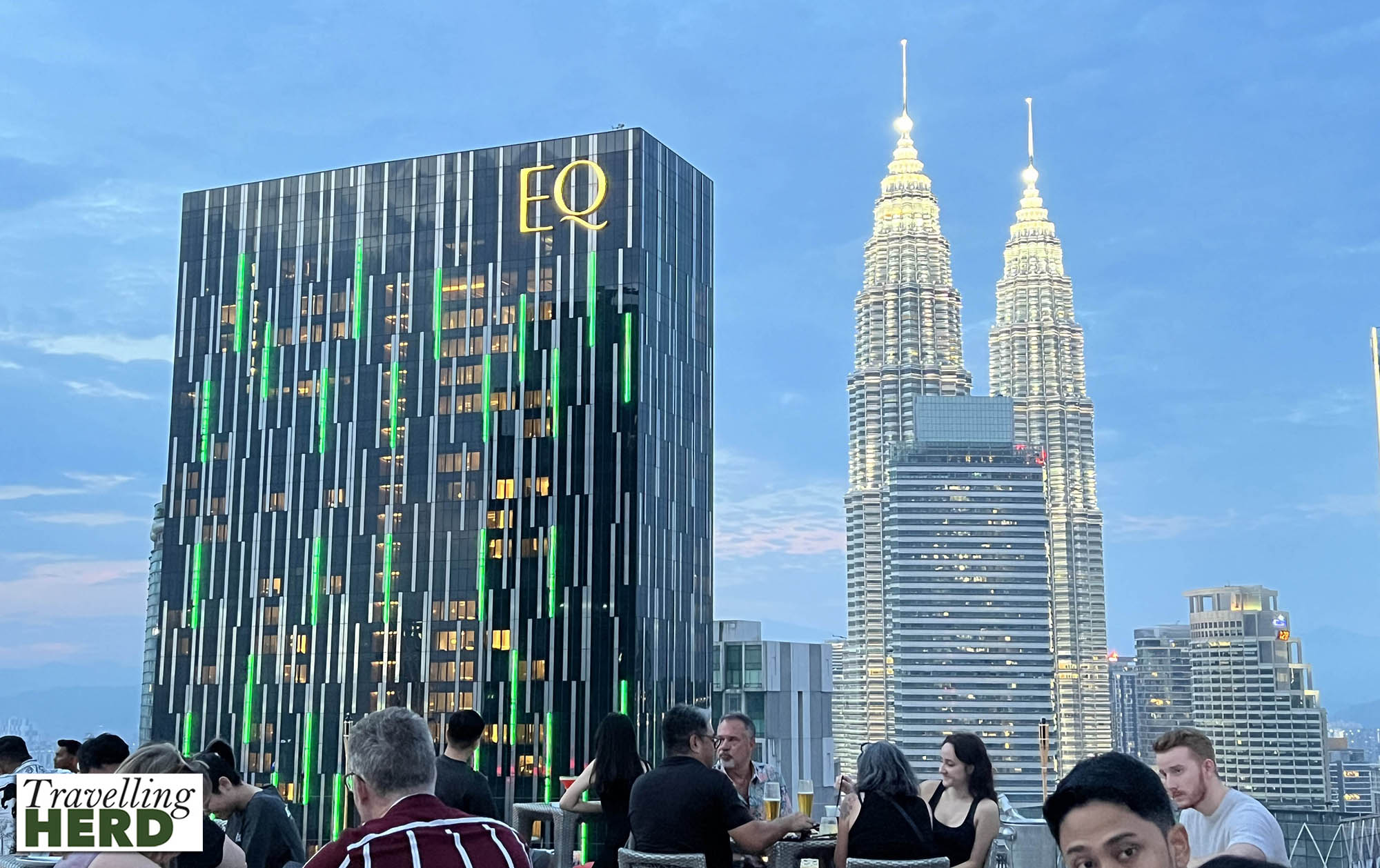
The price of entry to the Helipad Lounge includes two drinks which we sipped as the sun went down [see Selfie of the day] and the lights in the city came on. . .
. . . and the traffic moved far below us.

Robert enjoyed the small details designed to make it seem as though the chairs and tables could be cleared away for a helicopter to land at any time.
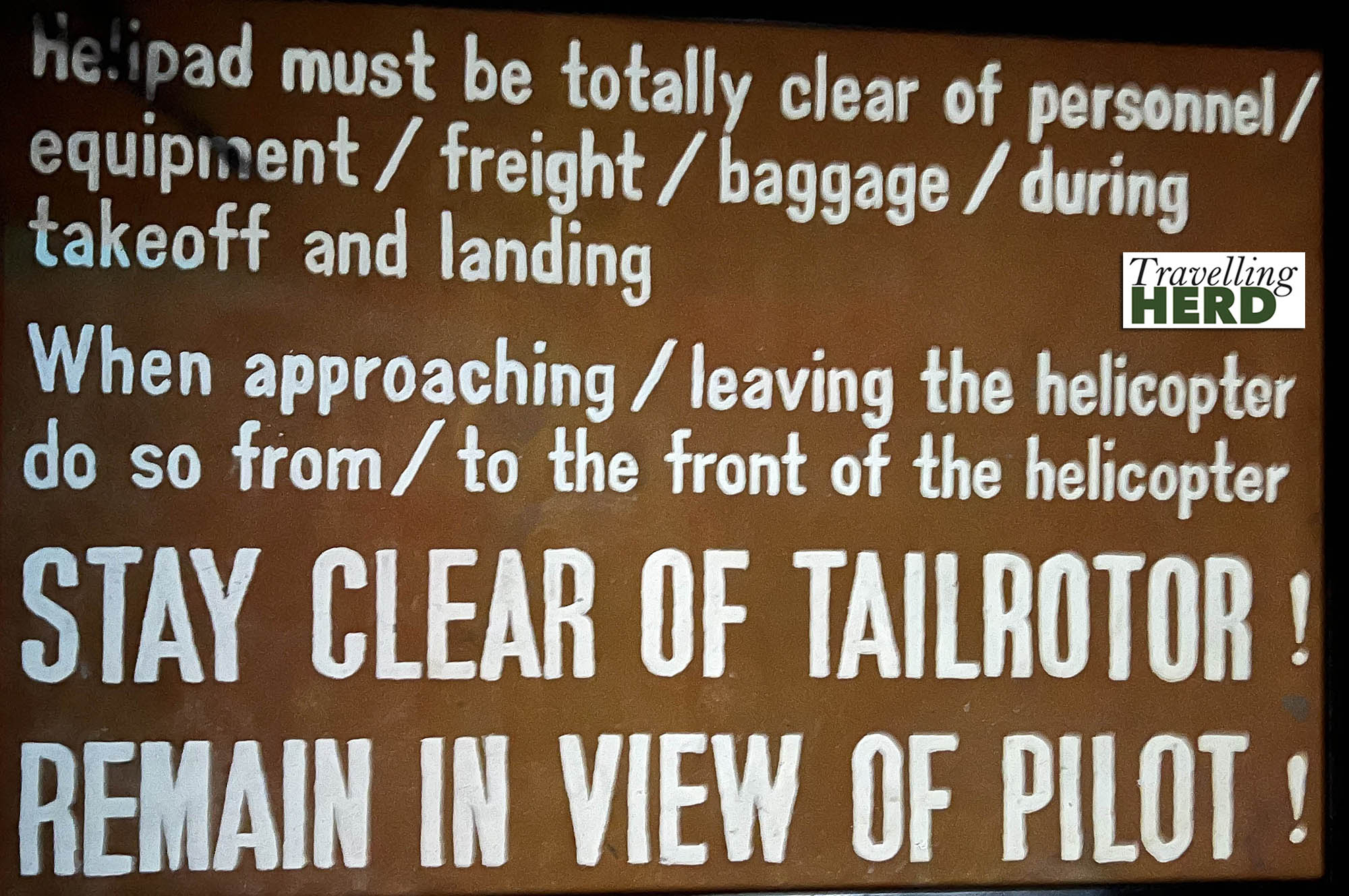
The floor is marked with an ‘H’, the universal symbol indicating a safe place for helicopters to land.

From our vantage point up the KL Tower, we had also noticed an area where the buildings were significantly lower than those surrounding them. The next day we went to stroll through Kampung Baru which ironically, for one of the oldest areas in the city, means ‘New Village’.

In 1899 the Sultan of Selangor issued a royal grant to establish Kampung Baru so that the Malays could continue to retain their village lifestyle within the ever expanding city.

Ever since, the residents of Kampung Baru, with their low level houses on stilts have resisted the pressures of redevelopment and construction which have taken place all around.
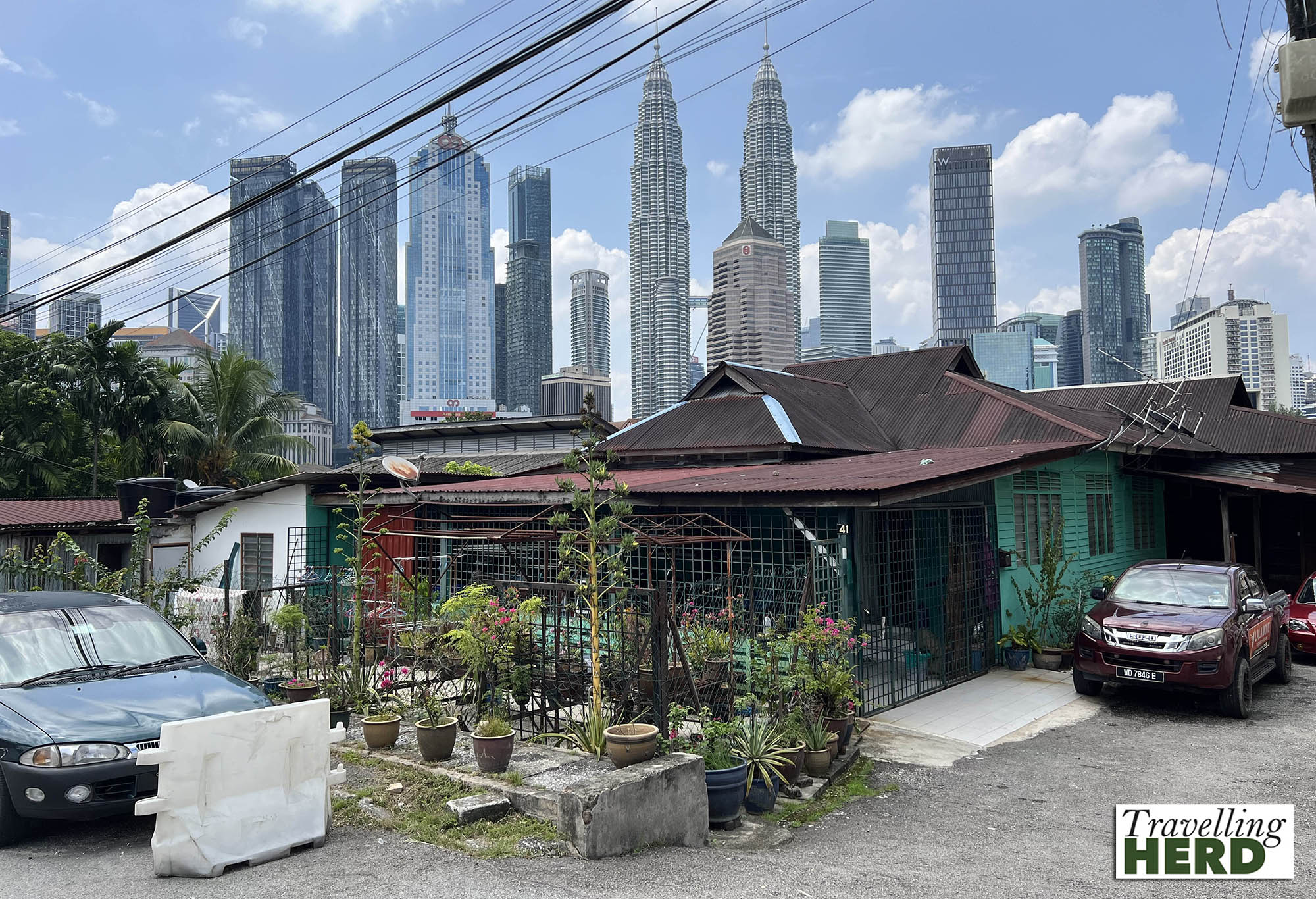
Because the buildings are so low, we found the area has some of the best, unobscured views of the Petronas Towers and the link bridge between them.

This must be some of the most valuable land in the capital: some estimate it to be worth as much as US$1.4 billion. We will see how long it remains as a bastion of the traditional village way of life.

From here we crossed the Saloma Link Bridge back to the financial heart of the modern city and the Petronas Towers. We will have to wait and visit if for another visit.

Video of the day:
Selfie of the day:
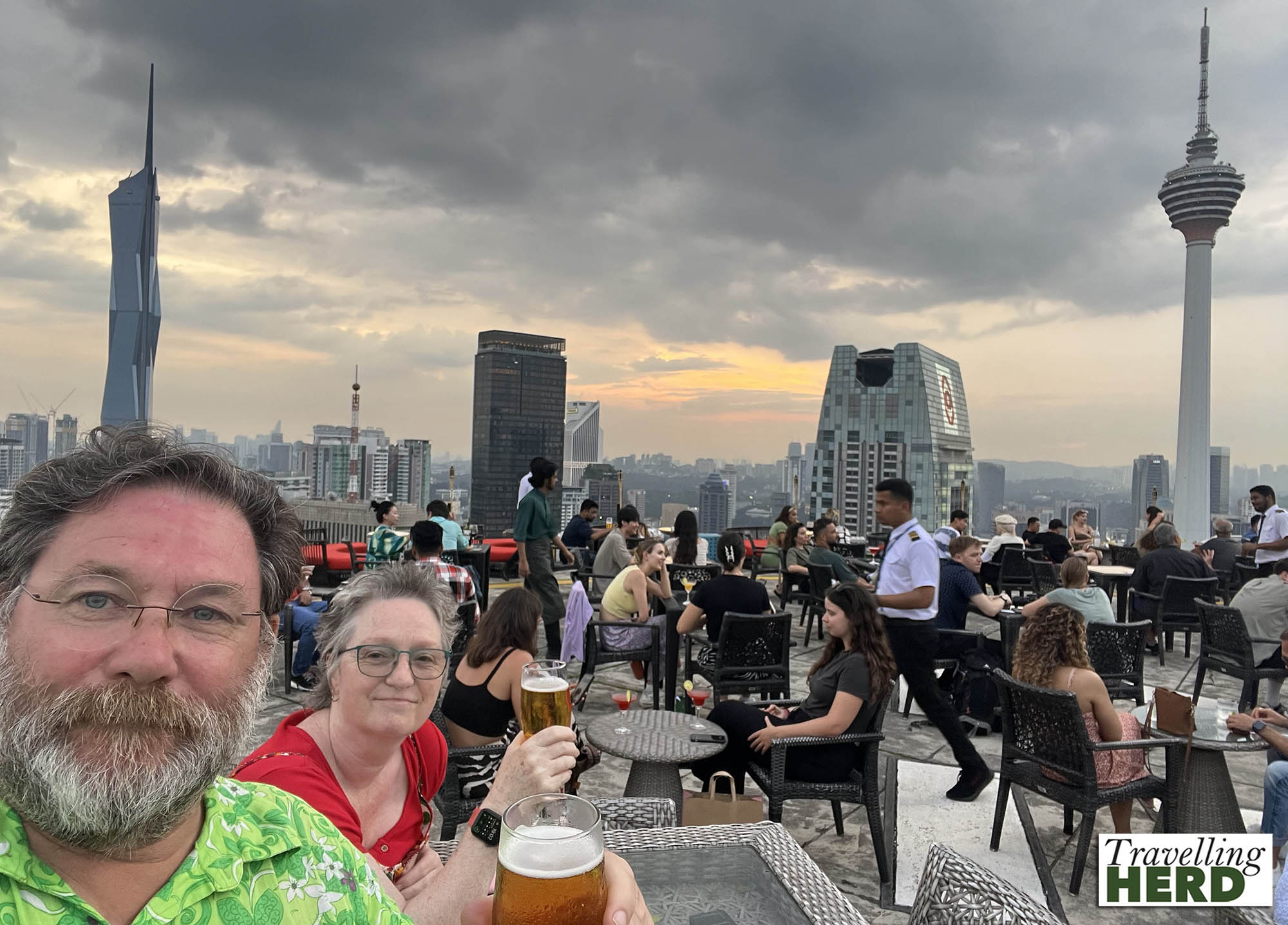
Route Map:
